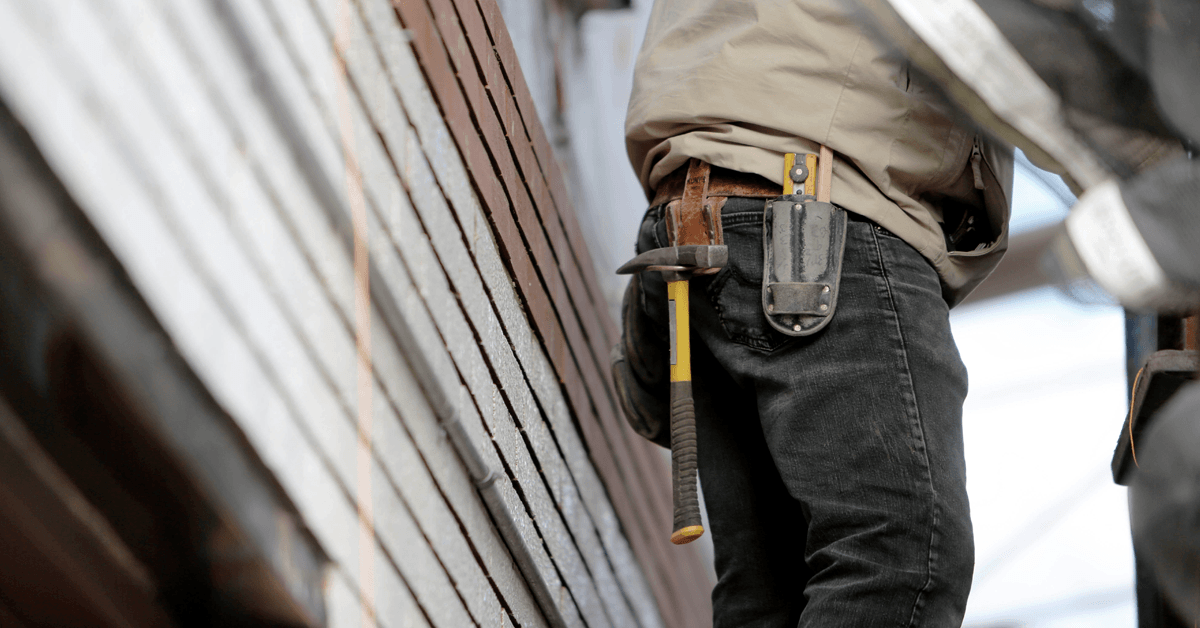Best Tool Belts for Contractors and Field Service Pros
By My Service Depot on Thursday, March 12, 2020Find the tool belt that makes the most sense for your line of work.
All tool belts are designed to keep your most frequently-used tools within easy reach, but that’s about the only quality all the most common models have in common. You can choose a belt with just a few pockets or dozens of specialized pockets, belts made of different materials, and belts with different closures and straps. Choosing the right tool belt for you comes down to your own personal preferences and the type of work you perform. Consider what’s important to you in a tool belt, and then check out some of our top picks.
What to Look for in a Tool Belt
When choosing a tool belt, you want to find one that’s comfortable and makes it easy for you to do your job. The wrong tool belt will be extraordinarily annoying and distracting, getting in your way as you move, causing you to dig around in the pockets for what you need, sliding off your hips at inconvenient moments, and even causing unnecessary back strain. On the other hand, you might forget you’re wearing a good tool belt, and you’ll always appreciate its presence when you can access exactly what you need exactly when you need it.
In particular, consider the following:
- Material: Leather, canvas and nylon are common materials used to make tool belts, and they affect how heavy the tool belt is and how well it holds up to wear and tear. If you don’t mind a heavier tool belt as long as it doesn’t easily rip or get holes, choose leather. If you need something more lightweight and are willing to repair the belt as needed, choose nylon. For a happy medium, choose canvas.
- Shoulder support: If you’re prone to back trouble, are on your feet for long hours, or typically carry heavy tools in your belt, consider a belt that includes shoulder straps in its design. These straps transfer some of the weight off your hips and lower back and to your shoulders and upper back. If you’ve never had a twinge in your back, these straps might feel unnecessary and cumbersome.
- Closure and adjustment: Cheap tool belts have cheap, plastic closures. This plastic clip will be the first part to break down and the most annoying to replace. Choose a belt with a metal closure, particularly one with reinforced eyelet closures to prevent the belt from slipping loose.
- Number of pockets: How many tools do you carry? If you basically strap your entire tool box around your waist, you may appreciate a highly compartmentalized belt that has a place for every tool, preventing them from getting jumbled together and causing you to waste time feeling around for what you need. On the other hand, if you don’t need all those pockets, don’t pay for them! A five-pocket tool belt is fine if that’s what works for you.
- Distribution of pockets: Climbing ladders? Crouching down? You don’t want a bulky front pocket preventing you from using your full range of motion or maintaining your balance on a ladder. Choose a design that places the pockets on both sides (or just on one side, if you prefer) rather than an “apron” style that stretches across the front.
With these considerations in mind, let’s take a look at some popular tool belt brands and designs.
Bucket Boss Airlift
Two deep front pockets make this bag ideal for field technicians who carry bulky and heavy equipment. To help combat the weight of those tools, this belt is made of lightweight synthetic materials and offers shoulder straps for additional support. Smaller pockets and straps strategically surround the larger bags so that you can still keep track of hand tools as needed. The belt has heavy-duty eyelet closures.
Occidental Leather
The Occidental Leather line of tool belts are made of high-quality leather for extended durability and have built-in rings for attaching shoulder support straps if desired. Numerous pocket configurations are available, including those made specifically for electricians (with tape holders, large pockets on one side for meters, and narrow pockets on the other side for hand tools), construction workers (plenty of straps for hammers and pockets for nails), and other industry workers. Their belts close like a typical leather belt, and if the sizing isn’t quite right, you can always punch a new hole into the leather.
Gatorback Triple Combo
This nylon belt has pockets, pockets, and more pockets: three large pockets hang off the belt from either side and from the front as well, which makes this a bulkier option. However, if you need easy access to a variety of tools more than you need full range of motion, this could be the perfect belt. It has optional rings to attach shoulder strap supports, but with the padded belt, you may experience enough comfort to forgo the shoulder straps altogether.


